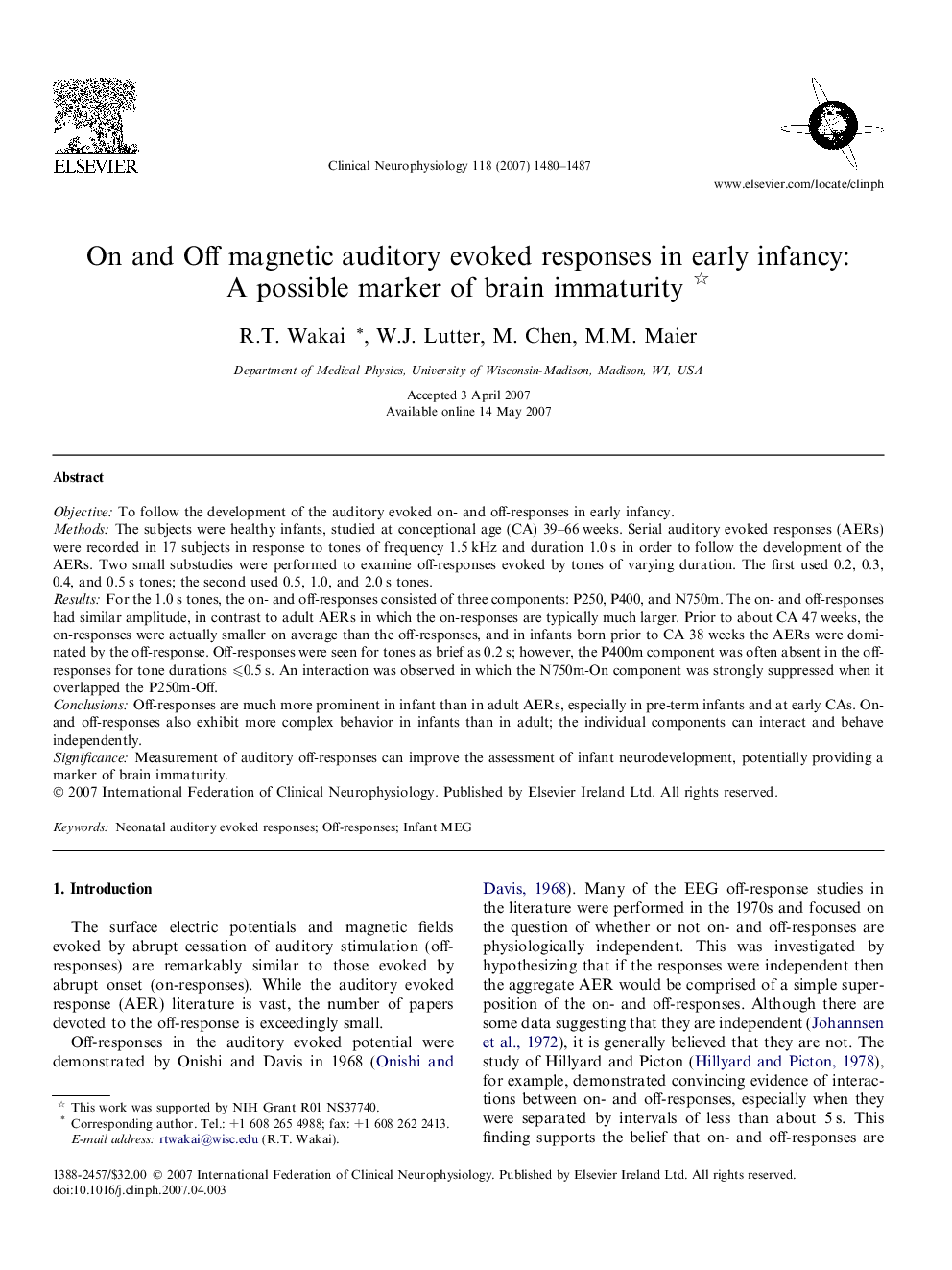| Article ID | Journal | Published Year | Pages | File Type |
|---|---|---|---|---|
| 3047621 | Clinical Neurophysiology | 2007 | 8 Pages |
ObjectiveTo follow the development of the auditory evoked on- and off-responses in early infancy.MethodsThe subjects were healthy infants, studied at conceptional age (CA) 39–66 weeks. Serial auditory evoked responses (AERs) were recorded in 17 subjects in response to tones of frequency 1.5 kHz and duration 1.0 s in order to follow the development of the AERs. Two small substudies were performed to examine off-responses evoked by tones of varying duration. The first used 0.2, 0.3, 0.4, and 0.5 s tones; the second used 0.5, 1.0, and 2.0 s tones.ResultsFor the 1.0 s tones, the on- and off-responses consisted of three components: P250, P400, and N750m. The on- and off-responses had similar amplitude, in contrast to adult AERs in which the on-responses are typically much larger. Prior to about CA 47 weeks, the on-responses were actually smaller on average than the off-responses, and in infants born prior to CA 38 weeks the AERs were dominated by the off-response. Off-responses were seen for tones as brief as 0.2 s; however, the P400m component was often absent in the off-responses for tone durations ⩽0.5 s. An interaction was observed in which the N750m-On component was strongly suppressed when it overlapped the P250m-Off.ConclusionsOff-responses are much more prominent in infant than in adult AERs, especially in pre-term infants and at early CAs. On- and off-responses also exhibit more complex behavior in infants than in adult; the individual components can interact and behave independently.SignificanceMeasurement of auditory off-responses can improve the assessment of infant neurodevelopment, potentially providing a marker of brain immaturity.
